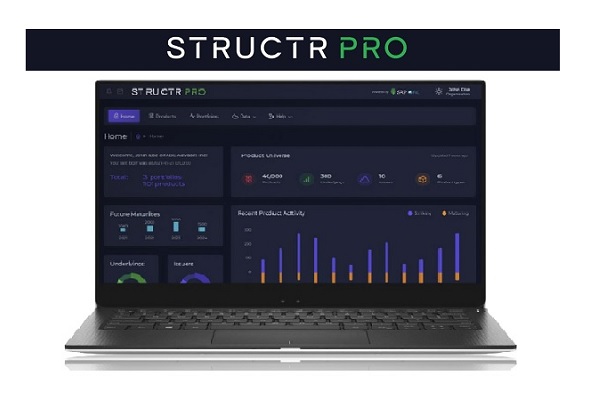The key properties of most structured products are generally acknowledged as capital protection and yield enhancement. On a simple level, investors can understand that capital protection provides the safety of cash with the possibility for higher returns, and that yield enhancement can be achieved when the underlying asset performs to certain modest targets – sometimes even allowing for slightly declining markets.
Core usage
Structured products have these core and self evidently very important benefits which makes them unique amongst virtually all investment types available to the retail market. Many investors choose structured products on a regular basis for precisely these reasons.
The goal of such usage of structured products would generally be to increase risk adjusted returns in a portfolio. In a previous article, I examined how a structured product fits in a portfolio and the techniques for examining the effect they have. It can be found here.
More sophisticated strategies
Rather than using structured products as an alternative to traditional investments, a more scientific usage of structured products can also have a lot of merit. Such an approach probably only makes sense for more sophisticated and wealthy investors.
Adding conventional investments to a portfolio is all about going for high expected returns combined with low volatility and low correlation with the rest of the portfolio. If research identifies assets that might reasonably fall into this category then standard portfolio analysis will determine if they improve return characteristics with the key determinant in the long term being the accuracy of such research. The same basic concept exists for structured products but their construction gives more possibilities and a requirement for better analysis and more precise market views.
One way to look for good risk adjusted returns is an arbitrage strategy involving buying products at less than their perceived fair value. However in general such opportunities are few and of small magnitude in today's world, the days of serious mispricing are mostly gone. Even if these existed it would require either the market to go quickly back to a fair value or to capture the difference through hedging.
More common and successful strategies do not focus on arbitrage but on the interplay of underlying performance on a realised basis. The use of structured products to form part of a frequent trading pattern depends on the availability of suitable instruments, with an appropriate liquidity and fee level. Reverse convertibles linked to single stocks and of short maturity (three months for example) have been used in markets in Asia and the Americas. In order to pursue this strategy successfully it is necessary to have a good view on the underlying stocks as well as future expectations of volatility. It is possible to generate high yields with controlled risk which would therefore improve risk adjusted returns.
The other widely used strategy involves setting barrier or auto-call levels appropriately with a view of playing the pseudo-arbitrage difference between implied volatility and realised volatility to capture yield enhancement at relatively small risk to capital. The reason for the popularity of auto-calls and other structured with barriers is that over the medium to long term the overall expected return is sufficient to justify the risk taken on. This explains many structured product funds have chosen to adopt the auto-call structure to generate yield at low risk.
Conclusion
In conclusion structured products can definitely be used to improve the risk return characteristics of a portfolio. The key to achieving this is to blend knowledge of pricing with simulations and analysis to provide the desired combinations and distribution profile.
Tags: Structured Edge Investment














